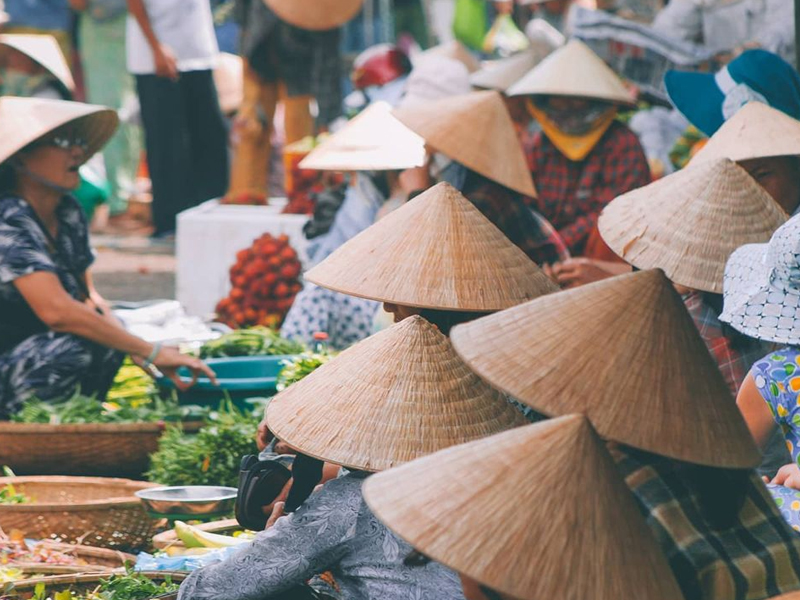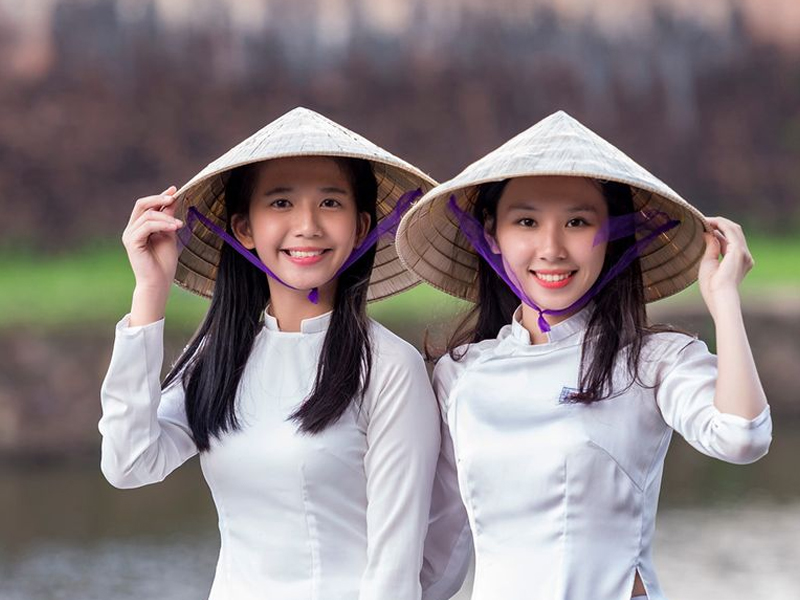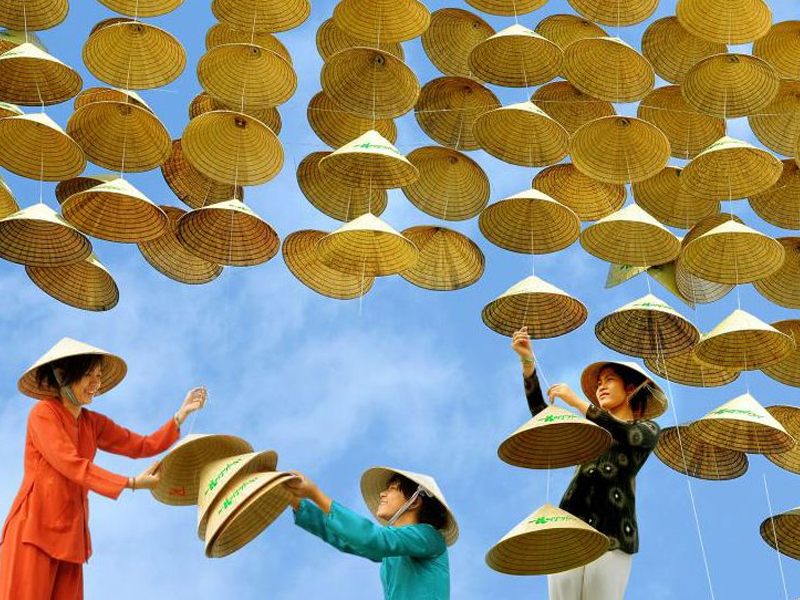Non La - Vietnamese's Famous Conical Hat
Non la (palm-leaf conical hat) is a traditional symbol of Vietnamese people without age, sex or racial distinctions.
Vietnam is a fascinating country, full of surprises and one of the most attractive destinations in Asia. Plan your trip with the list of all best places in Vietnam with ViTour Travel.
Like many other traditional Vietnamese costumes, the conical hat has its own origin, derived from a legend related to Vietnam's history of wet rice cultivation. The story is about a giant woman from the sky who protected humanity from a heavy rain. She wears a hat made of four round leaves to withstand any rain. After the Goddess was gone, the Vietnamese built a temple to commemorate her as the Goddess of Rain.

Vietnamese tried to make a hat modelling after the Goddess' by stitching together palm leaves, which is now known as Non la. The image of Non la has become strongly associated with peasant lives from the paddy field to boat men and women.
Non la is made from simple and readily available materials such as palm leaves, wood bark and bamboo. Non la is sold a lot and there are many traditional craft villages where visitors can get high quality conical hats. For example, Chuong village - 30km southwest of Hanoi, is famous for its handmade conical hats for centuries. Especially the poem conical hat - a famous hat of Hue, with the image of bamboo or lyrical lines under the sunken layers of bamboo leaves.


Non la has many variations sinc its original version thousands of years ago after making first appearance over 3000 years ago. According to the old, in the past, people divided Non la into three main types: Non muoi (or ‘Non ba tam’, ‘Non quai thao’), medium-sized hat and head-hat. Non la used to be flat and round, about 1 metre in diameter, with a chin-strap in rattan (Non quai thao). Non quai thao is a crucial accessory of countryside women when they go to festivities or pagodas and as well as female singers in Lim festival (Bac Ninh). Head-hat is the smallest one with lowest selvage. At that time, people also classified the hats according to the owners’ levels. Some kinds were for the old; some were for the rich and mandarins; Non for kids, troops and monks. Each kind has its own shape and special manner; sometimes it differs regionally from each other.
Non la can serve many uses such as personal sunshade, shopping basket for women, plowman's fan on hot summer days, or even a souvenir to remember. The image of a young woman wearing ao dai and ao dai is a beautiful symbol of Vietnam; Non la is also an object as a part of the national soul closely attached to Vietnamese people, so many tourists enjoy considering Non la as a special souvenir of Vietnam.
Articles same category
Mu Cang Chai's on top 50 most beautiful destinations in the world
Mu Cang Chai is a destination that attracts many tourists not only domestic tourists but also foreign tourists after winning many impressive awards.
6 must do activities in Ninh Binh (Vietnam)
Do you have any plans for your trip to Ninh Binh Vietnam yet? Here are the 6 must-do activities in Ninh Binh, Vietnam...
6 Best Things To See And Do In Hanoi, Vietnam
Best things to see and do in Hanoi, Hanoi cultural tour for foreign visitors with InboundVietnam






_w100_h80_c.jpg)
